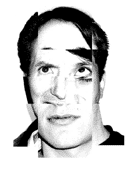 Richard Coniff writes in the January 2004 Smithsonian magazine about the work of UC San Fran prof Paul Ekman and his study of faces. It carries pictures of a work by artists Bill Viola and his wife Kira Perov.
Richard Coniff writes in the January 2004 Smithsonian magazine about the work of UC San Fran prof Paul Ekman and his study of faces. It carries pictures of a work by artists Bill Viola and his wife Kira Perov.
Yeah, sure, the face is capable of 43 movements expressing 10,000 different expressions. Yeah, Bill’s work is interesting, but…
I have two complaints. First, there’s all this talk that facial expressions are confusing. Ekman’s work presents the expressions out of context for a second or less at a time. Oh my, how surprising that they mistake anger for disgust! Ekman tells us that it’s all in the nose (it’s scrunched up for disgust). And sure, surprise looks like fear, but with an open mouth, but isn’t there something foolish about suggesting that we’re bad at reading faces because the students usually goof half the expressions? What about context? Again, let me ask: WHAT ABOUT CONTEXT?
The fault is probably more with the writer’s gloss or un-nuanced delivery than with Ekman’s studies. Clearly the author didn’t have much room to maneuver in six paragraphs, a caption and a pull quote, and clearly, there wouldn’t be much to the story if the author suggested “but people are actually much better at understanding expressions in context, because, as it turns out, there’s a whole lot more to it that the angle of the brow.”
My second (real) complaint (and aint I full of complaints?(and appositives)) is that Viola’s work (which removes, ignores, or alters context for the sake of art) is such a knock-off. Let me introduce you to Human-InToFace, the somewhat less celebrated exploration of the face, its expressions and it’s connection to the person.